5 Inbound Marketing Lessons Renaissance Fairs Teach Us
Last weekend I attended King Richard’s Faire, a renaissance fair in Carver, Mass. (I’m dorky and I’m OK with it). My family attended the fair with me. (My family is dorky, and I’m OK with that too). Like most King Richard Faire fans, we go every year and look forward to it each time. This year I realized why: renaissance fairs are inbound marketing geniuses. Between the yards of beer, jousting and bad English accents, I saw five inbound marketing practices renaissance fairs execute brilliantly to keep fans coming back year after year.
5 Inbound Marketing Lessons Renaissance Fairs Teach Us
1. Know Your Audience…Intimately
Researching your audience is the first step to any successful marketing program. It makes sense that the more you understand the people you’re marketing to, the more effectively you can reach them. There are several methods to gather demographic and behavioral data: surveys, interviews, focus groups, etc. Renaissance fairs use a different method, but are able to capture better data.
At renaissance fairs, you’ll notice employees in character regularly walking the grounds. These people are hired actors instructed to engage with fair goers. The interaction they provide not only enhances the renaissance experience for fair goers, but also is a great way to collect user data. Think about it. Observing people passively can get you demographics. Interviewing them can get you some behavioral data. But engaging them in natural conversation can get you marketing gold. This is how renaissance fairs are able to profile their audience so spot on, and as a result, deliver a spot on experience.
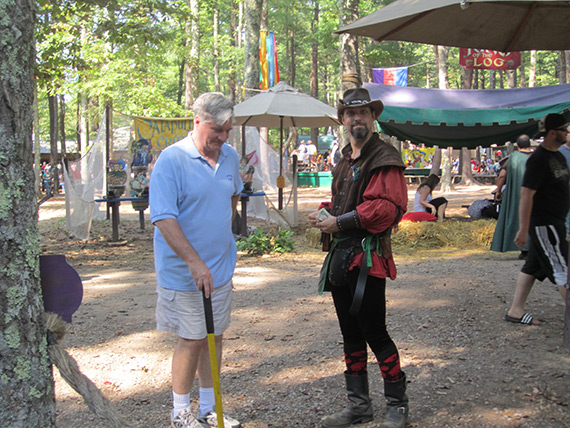
A employee in character talks to my father about what games of skills he’s going to try out…in an English accent.
Key Takeaway: take the time to engage your audience members in conversation to learn who they are and what makes them tick. Only then can you deliver the ultimate content.
2. Create Engaging and Interactive Content
People love to be entertained, which is why it’s no surprise that good content is often entertaining. Inbound marketing teaches us to look at content in this way. I.e., don’t just write a blog, write something engaging and original that you know your audience is interested in. Only then will you capture your audience’s hearts and turn them into champions.
Renaissance fairs teach us a better lesson: don’t just engage your audience, provide them an interactive experience. If you’ve ever been or decide to go to a renaissance fair, you’ll notice that you’re the main attraction. Fair goers are encouraged to dress up, worked into on-stage performances and constantly interacted with by characters and vendors. Renaissance fairs provide fair goers with the ability to live their fantasy–something rarely accomplished by even the most entertaining of content.
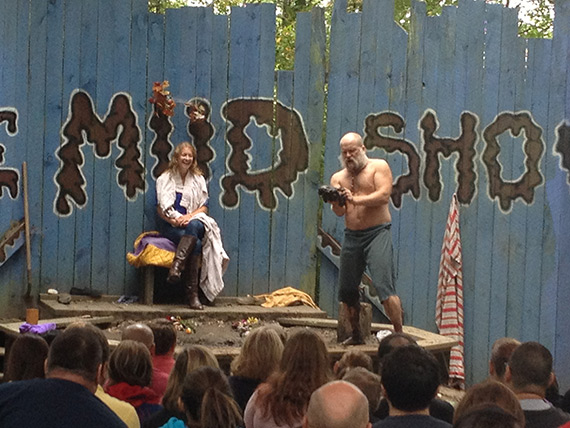
One of our crew gets pulled up on stage to play the part of Beulah, the beautiful judge in the Mud Show.
Key Takeaway: whenever possible, produce engaging AND interactive content. Adding an interactive element will help keep your audience coming back for more.
3. Promote Your Content in the Right Places, in the Right Ways
Once you have stellar piece of content, promotion is the next step. Winning the promotion game is about knowing the where and how. Obviously you want to promote with your own social media communities: Facebook, Twitter, Google+ and so forth. But, to be a inbound marketing genius of the renaissance caliber, it’s going to take a lot more than that. You’re going to have to put your research to the test and promote where you know your audience is and loves to go. The use of the joust to promote eateries at renaissance fairs is an excellent example of this.
The joust is by far the largest attraction at the fair: it brings the largest audience and lasts over an hour. There are three jousts throughout the day, scheduled at breakfast, lunch and dinner. To enter and exit the joust, one must pass through the fair’s main eating grounds, which host the majority of its eateries and beer stands. As you may imagine, fair goers love eating giant turkey legs and chugging yards of beer while watching medieval combat, or immediately afterward.
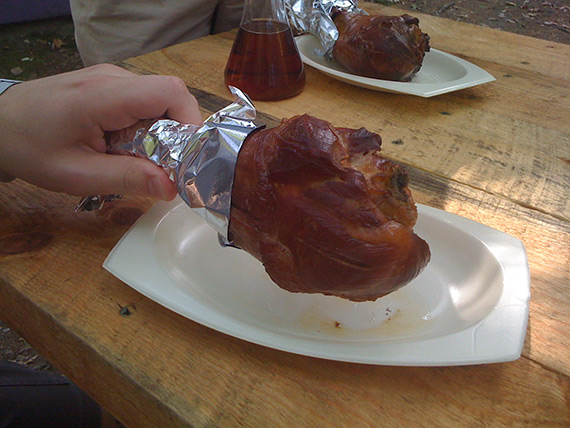
A delicious turkey leg purchased on the way to the joust.
Key Takeaway: promoting your content where your audience goes to consume related content, can speed up your discovery.
4. Measure Your Audience’s Reaction
Great content is defined by your audience. You can think your content is great, but if your audience thinks it stinks, it stinks. Ultimately, you need your audience on board if you want your game to become a success. So, how can you ensure your content is great? First, you need to be able to measure your audience’s reaction.
In general, renaissance fairs are very in tune with audiences, however they pay particularly close attention to audience reaction. Audience participation is core to most renaissance performances. Actors single audience members out to become part of the storyline by acting on stage, repeating lines, etc. However, the larger audience’s roll is much more important. The fair measures the quality of its performances based on overall audience engagement. Clapping, laughing, oohing, ahhing, tip giving and comments made after a performance are all behaviors used to measure whether something is “good.”
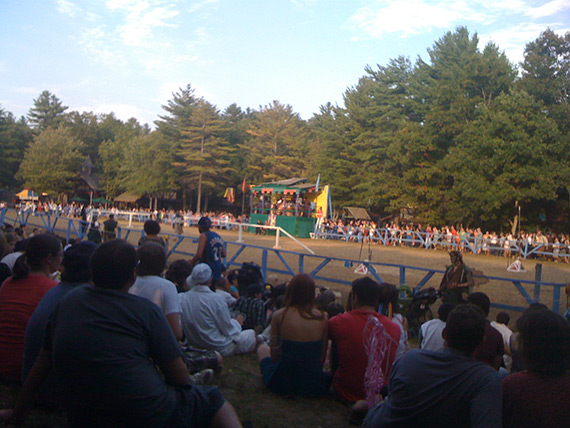
A packed crowd looks on as the joust commences.
Key Takeaway: to determine whether your content is great, you must be able to measure audience reaction.
5. Improve Your Content Based on Your Results
Now that you’re able to measure your audience’s reaction, what do you do with the data? Simple. Use it to improve and iterate.
Every year King Richard’s Fiare gets better and better. Popular performances move to bigger stages to accomodate growing audiences. Audio-visual technology is incorporated to help audiences hear and see performances better. Costumes and effects get more sophisticated for a more authentic experience. Most importantly, every improvement made is based on last year’s audience reaction. You can do the same.

A performer uses fire effects to make his whip show more spectacular.
Key Takeaway: use the data you collected on past audience reactions to improve and iterate on future content.
Leave a Comment
Only registerd members can post a comment , Login / Register

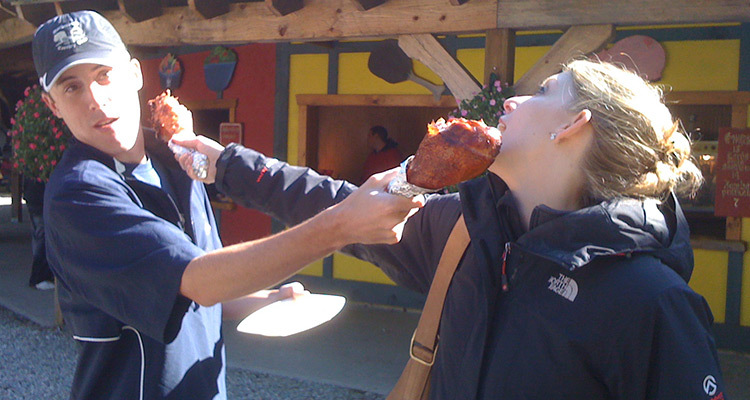


2 Comments
Liz
about 13 years agoGreat post, Emmy! You're completely right in stating that to be successful at marketing, you need to know who your demographic is and what they want.
Emmy
about 13 years agoThanks for the comment Liz. Glad you liked the post and also see the importance in target research.